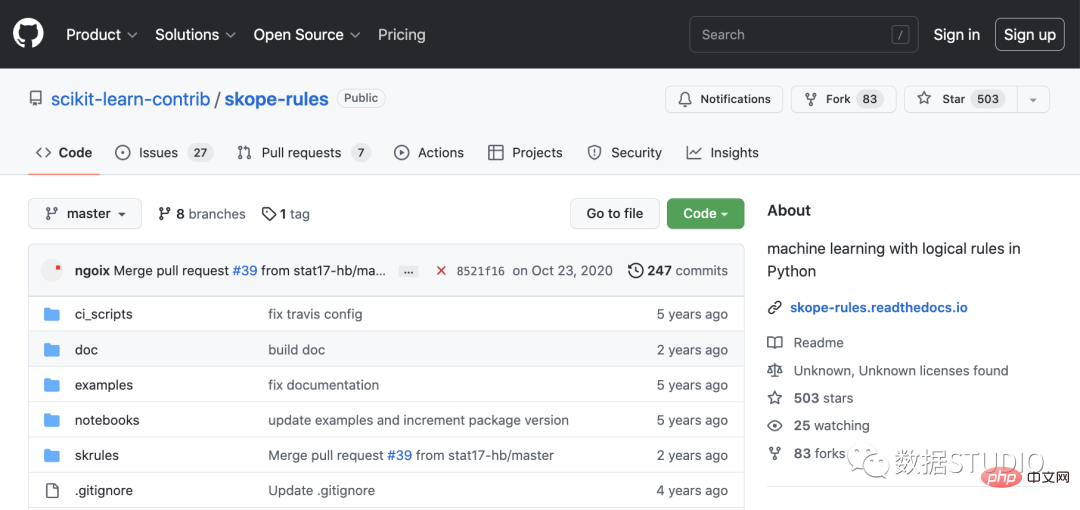
In Java, one way to pass parameters at runtime is to use the command line or terminal. When retrieving these values for command line arguments, we may need to find the number of arguments provided by the user at runtime, which can be accomplished with the help of the length property. This article aims to explain the process of passing and getting a user-supplied number of parameters with the help of a sample program.
Get the number of parameters provided by the user at runtime
Before finding the number of command line arguments, our first step is to create a program that allows the user to pass arguments at run time.
String[] parameters
When writing Java programs, we often encounter the main() method. When the JVM calls this method, the Java application begins execution. It is used with an argument called String[] args, which accepts an argument of type String. It allows us to pass parameters through the terminal and store these parameters in a string array. We can say that String[] args is a command line argument.
Example 1
The following example will illustrate how to pass parameters from the terminal to a Java program.
public class Arg {
public static void main(String []args){
// for each loop to print argument taken from terminal
for(String arg : args) {
System.out.println(arg);
}
}
}
Output
To compile the code by entering the command from the terminal: javac Arg.java
To run the code by entering the command from the terminal: java Arg "Your String"
PS D:\Java Programs> java Arg "Hello, You are on Tutorials Point" Hello, You are on Tutorials Point
So far, we have seen how to get parameters from the user at runtime. Now, our next step is to find the number of arguments passed.
As mentioned before, to find the number of arguments passed by the user at runtime, we can use the length property of String[] args.
Example 2
This example illustrates how to use the length property to get the number of arguments.
public class Arg {
public static void main(String []args) {
// for each loop to print argument taken from terminal
System.out.println("List of arguments passed by user: ");
for(String arg : args) {
System.out.print(arg);
}
System.out.println();
// to print the length of argument
System.out.println("Number of arguments passed by user: " + args.length);
}
}
Output
PS D:\Java Programs> java Arg "Hello! how are you" List of arguments passed by user: Hello! how are you Number of arguments passed by user: 1
If we enclose the parameter in double quotes, it will be treated as a single parameter. Therefore, we get a result of 1.
Example 3
In the following examples, we will provide input without double quotes.
public class Arg {
public static void main(String []args) {
// for each loop to print argument taken from terminal
System.out.println("List of arguments passed by user: ");
for(String arg : args) {
System.out.println(arg);
}
// to print the length of argument
System.out.println("Number of arguments passed by user: " + args.length);
}
}
Output
PS D:\Java Programs> java Arg Hello! how are you List of arguments passed by user: Hello! how are you
When we don't use double quotes, the parameters will be processed separately.
Example 4
The following example demonstrates how to use the length property to retrieve all parameters passed through the terminal.
public class Arg {
public static void main(String []args) {
// for loop to print argument taken from terminal
System.out.println("List of arguments passed by user: ");
for (int i = 0; i < args.length; i++) {
System.out.println("Argument " + (i + 1) + ": " + args[i]);
}
}
}
Output
PS D:\Java Programs> java Arg Hello! how are you List of arguments passed by user: Argument 1: Hello! Argument 2: how Argument 3: are Argument 4: you
in conclusion
In this article, we learned how to find the number of arguments provided by the runtime in Java using the length property of String[] args. We also discovered the use of String[] args, which allows the user to pass arguments from the terminal to the main() method.
The above is the detailed content of How to find the number of parameters provided by runtime in Java?. For more information, please follow other related articles on the PHP Chinese website!
 OpenOOD更新v1.5:全面、精确的分布外检测代码库及测试平台,支持在线排行榜、一键测试Jul 03, 2023 pm 04:41 PM
OpenOOD更新v1.5:全面、精确的分布外检测代码库及测试平台,支持在线排行榜、一键测试Jul 03, 2023 pm 04:41 PM分布外(OOD)检测对于开放世界智能系统的可靠运行至关重要,但目前面向对象的检测方法存在「评估不一致」(evaluationinconsistencies)的问题。之前的工作OpenOODv1统一了OOD检测的评估,但在可扩展性和可用性方面仍然存在限制。最近开发团队再次提出OpenOODv1.5,相比上一版本,新的OOD检测方法评估在确保准确、标准化和用户友好等方面得到显著提升。图片Paper:https://arxiv.org/abs/2306.09301OpenOODCodebase:htt
 涨知识!用逻辑规则进行机器学习Apr 01, 2023 pm 10:07 PM
涨知识!用逻辑规则进行机器学习Apr 01, 2023 pm 10:07 PM在准确率-召回率曲线上,同样的点是用不同的坐标轴绘制的。警告:左边的第一个红点(0%召回率,100%精度)对应于0条规则。左边的第二个点是第一个规则,等等。 Skope-rules使用树模型生成规则候选项。首先建立一些决策树,并将从根节点到内部节点或叶子节点的路径视为规则候选项。然后通过一些预定义的标准(如精确度和召回率)对这些候选规则进行过滤。只有那些精确度和召回率高于其阈值的才会被保留。最后,应用相似性过滤来选择具有足够多样性的规则。一般情况下,应用Skope-rules来学习每个根本原因的
 带你搞懂Java结构化数据处理开源库SPLMay 24, 2022 pm 01:34 PM
带你搞懂Java结构化数据处理开源库SPLMay 24, 2022 pm 01:34 PM本篇文章给大家带来了关于java的相关知识,其中主要介绍了关于结构化数据处理开源库SPL的相关问题,下面就一起来看一下java下理想的结构化数据处理类库,希望对大家有帮助。
 如何在Java中找到运行时提供的参数数量?Sep 23, 2023 pm 01:13 PM
如何在Java中找到运行时提供的参数数量?Sep 23, 2023 pm 01:13 PM在Java中,在运行时传递参数的一种方法是使用命令行或终端。在检索命令行参数的这些值时,我们可能需要查找用户在运行时提供的参数数量,这可以借助length属性来实现。本文旨在借助示例程序解释传递和获取用户提供的参数数量的过程。获取用户在运行时提供的参数数量在查找命令行参数的数量之前,我们的第一步是创建一个允许用户在运行时传递参数的程序。字符串[]参数在编写Java程序时,我们经常遇到main()方法。当JVM调用此方法时,Java应用程序开始执行。它与一个名为String[]args的参数一起使
 Linux命令:查看telnet进程数量的方法Mar 01, 2024 am 11:39 AM
Linux命令:查看telnet进程数量的方法Mar 01, 2024 am 11:39 AMLinux命令是系统管理员日常工作中必不可少的工具之一,它们可以帮助我们完成各种系统管理任务。在运维工作中,有时候需要查看系统中某个进程的数量以便及时发现问题和进行调优。本文将介绍如何使用Linux命令查看telnet进程的数量,让我们一起来学习吧。在Linux系统中,我们可以使用ps命令结合grep命令来查看telnet进程的数量。首先,我们需要打开终端,
 一起聊聊Java多线程之线程安全问题Apr 21, 2022 pm 06:17 PM
一起聊聊Java多线程之线程安全问题Apr 21, 2022 pm 06:17 PM本篇文章给大家带来了关于java的相关知识,其中主要介绍了关于多线程的相关问题,包括了线程安装、线程加锁与线程不安全的原因、线程安全的标准类等等内容,希望对大家有帮助。
 Java基础归纳之枚举May 26, 2022 am 11:50 AM
Java基础归纳之枚举May 26, 2022 am 11:50 AM本篇文章给大家带来了关于java的相关知识,其中主要介绍了关于枚举的相关问题,包括了枚举的基本操作、集合类对枚举的支持等等内容,下面一起来看一下,希望对大家有帮助。
 详细解析Java的this和super关键字Apr 30, 2022 am 09:00 AM
详细解析Java的this和super关键字Apr 30, 2022 am 09:00 AM本篇文章给大家带来了关于Java的相关知识,其中主要介绍了关于关键字中this和super的相关问题,以及他们的一些区别,下面一起来看一下,希望对大家有帮助。


Hot AI Tools

Undresser.AI Undress
AI-powered app for creating realistic nude photos

AI Clothes Remover
Online AI tool for removing clothes from photos.

Undress AI Tool
Undress images for free

Clothoff.io
AI clothes remover

AI Hentai Generator
Generate AI Hentai for free.

Hot Article

Hot Tools

SublimeText3 English version
Recommended: Win version, supports code prompts!

DVWA
Damn Vulnerable Web App (DVWA) is a PHP/MySQL web application that is very vulnerable. Its main goals are to be an aid for security professionals to test their skills and tools in a legal environment, to help web developers better understand the process of securing web applications, and to help teachers/students teach/learn in a classroom environment Web application security. The goal of DVWA is to practice some of the most common web vulnerabilities through a simple and straightforward interface, with varying degrees of difficulty. Please note that this software

mPDF
mPDF is a PHP library that can generate PDF files from UTF-8 encoded HTML. The original author, Ian Back, wrote mPDF to output PDF files "on the fly" from his website and handle different languages. It is slower than original scripts like HTML2FPDF and produces larger files when using Unicode fonts, but supports CSS styles etc. and has a lot of enhancements. Supports almost all languages, including RTL (Arabic and Hebrew) and CJK (Chinese, Japanese and Korean). Supports nested block-level elements (such as P, DIV),

Notepad++7.3.1
Easy-to-use and free code editor

PhpStorm Mac version
The latest (2018.2.1) professional PHP integrated development tool







